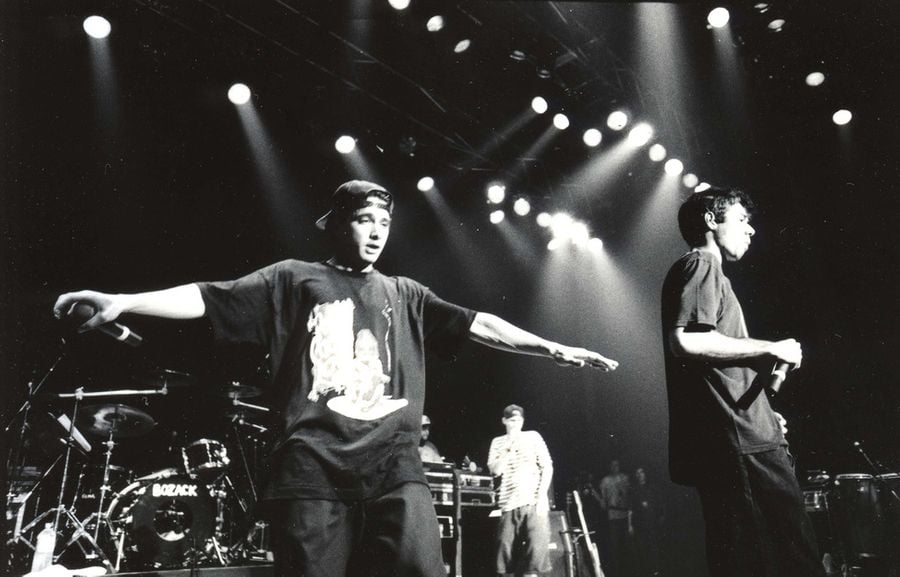On a reflective look at hip-hop as a whole, there are very few more pivotal moments in the growth of the genre than when The Beastie Boys helped introduce a new beat to the average man on the street with their groundbreaking 1986 debut album Licensed To Ill. That record was like nothing else in the charts at that moment in time and gave the group a platform to build on, but, most importantly, it allowed rap to gain traction in the mainstream like never before.
Before The Beastie Boys, hip-hop was an underground secret, and it wasn’t like today, where every obscure genre of music is available at the touch of a button. Kids growing up in parts of America, which may have only been a two-hour drive away from Brooklyn, wouldn’t even have inclined that this burgeoning scene was happening a stone’s throw away with Def Jam Records in the Big Apple.
The label, formed in 1984 by Rick Rubin, delved into hip-hop after an encounter with Russell Simmons, who had all the connections required to kickstart a movement. Together, the two visionaries created something extraordinary. The Beastie Boys and LL Cool J were two of their first signings, and although Cool J’s 1985 debut album, Radio, preceded The Beastie Boys, it failed to have a commercial impact in the way Licensed To Ill did a year later.
Their debut arrived like a tornado, storming to number one on the Billboard Charts. It was absorbed by people from all across the world that had never heard hip-hop before The Beastie Boys landed in their life, and the trio acted as a gateway drug for fans who gradually moved on to other artists after getting hooked on rap.
Licensed to Ill’s accessibility meant the trio became adored by both hip-hop aficionados and the entry-level fans who had never heard the sound before. Both categories, it is safe to say, were spellbound by the brilliance of The Beastie Boys. Although many didn’t clock the band’s comedic edge upon the first release, they still found themselves engrossed by the magic that Mike D, MCA and Ad-Rock had created.
Licensed To Ill became the first hip-hop album ever to top the charts, and while this upset a minority of hardcore fans of the genre who were quick to scorn the trio as fakes, time would prove The Beastie Boys to be the real deal. “The only way that we could have become the band that we became is because New York at that time had everything going on,” Mike D reflected to The Guardian in 2018 about how their background was pivotal to their success.
He added: “Now, you can get every song that ever influenced us on this phone, but at that time, New York truly was the only place in the world that had this confluence of all this different kind of music. New-wave stuff, no-wave stuff, post-punk, then the beginnings of rap. Dub, jazz, salsa, whatever.”
It would have been easy for The Beasties to get drunk on their newfound fame, but instead, they decided to lift hip-hop acts around them in an attempt to whip up a hip-hop storm. In 1987, they hit the road with Public Enemy and Murphy’s Law for a glittering run of shows.
The impact of this tour changed Chuck D’s mindset and helped Public Enemy enormously. When inducting The Beastie Boys into the Rock and Roll Hall of Fame in 2012, Chuck revealed that it “made us rethink what we should do on stage and affirmed for us how important our own Beastie Boys, he calls himself Flavor Flav, might be to our success. In that way, the Beastie Boys literally helped us to get our act together by living up to more than their name night after night on the road.”
While it’s evident that race undoubtedly played a part in why middle America was happy to get on board with The Beastie Boys, they also had the skills and talent to back up why they received such mass attention.
After Licensed To Ill, hip-hop’s stranglehold on popular culture only tightened with each passing year. In 1988, NWA would arrive, and the East Coast era of hip-hop would take over. Since then, the genre has taken on many incarnations as it develops with every generation.
Despite all the different guises that hip-hop has taken, The Beasties unique brand has survived the test of time because it was so unapologetically authentic to them. They weren’t trying to be anyone else but three goofballs from New York, and that resonated with people who decided maybe hip-hop was for them after all.
